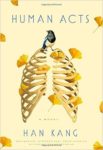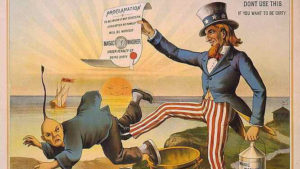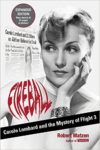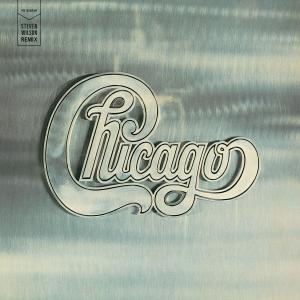|
|
Translated literature offers an opportunity rarely seen in American literature. We know America, we grew up here, we reflect — if not create — its culture. Books from other countries allow us to go someplace that is, by definition, alien. They can immerse us in the country’s culture and let us see life from a different perspective. They also, though, enable us to discern aspects of the human condition that are universal.
Two such aspects are, sadly, violence and human suffering. Korean novelist Han Kang acknowledges she wants to explore those facets with her writing. She admits to being haunted by the fact that violence “is part of being human.” And she professes that she tends to want to “delve deeper” into human suffering “as I’m always trying to discover the truth behind a person.” As dismal as that may sound, those topics were key to her The Vegetarian, one of 2016’s most highly regarded books and winner of the Man Booker International Prize.
The Vegeterian was a look into these issues centered around Yeong-hye, a young Korean housewife who suddenly refuses to eat or cook meat or allow it in her house. While becoming a vegetarian isn’t disconcerting in America, Koreans share meals together as part of creating and maintaining emotional bonds and intimate relationships. Thus, Yeong-hye’s decision is seen as deviant and defiant and starts her on a path full of suffering and violence.
 Human Acts, Kang’s latest novel to be published in English, doesn’t address these issues allegorically or focus on one person. Instead, it is built upon the Gwangju Uprising in May 1980, in which college students and others engaged in a mass protest against the military government were fired upon, killed, and beaten by government troops. Thousands were arrested. Disputes surround the number of civilian deaths. The government said less than 200 were killed while foreign press estimates ranged as high as 2,000. Human Acts, Kang’s latest novel to be published in English, doesn’t address these issues allegorically or focus on one person. Instead, it is built upon the Gwangju Uprising in May 1980, in which college students and others engaged in a mass protest against the military government were fired upon, killed, and beaten by government troops. Thousands were arrested. Disputes surround the number of civilian deaths. The government said less than 200 were killed while foreign press estimates ranged as high as 2,000.
Like The Vegeterian, each chapter of Human Acts is told from the perspective of a different character, relating the impact of the killings from different points in time. They are “The Boy” and “The Boy’s Friend” in 1980, “The Editor” in 1985, “The Prisoner” in 1990, “The Factory Girl” in 2000, and “The Boy’s Mother” in 2010. Except for the mother, all were on the scene. With The Boy, Dong-Ho, and his mother bookending the chapters, his death is the major plot line around which the novel is built. Dong-Ho, who recently entered the Korean equivalent of ninth grade, helps in a gymnasium with two slightly older women, The Editor and The Factory Girl, washing, cataloging and laying out for identification bodies of those killed during the 10-day uprising.
Although each narrator’s story adds dimension to the novel’s motif, The Prisoner may raise the core motif of the book. Each day, he says, he is eaten away asking “why did he die, while I’m still alive?” Here is how he encapsulates Kang’s essential questions:
Is it true that human beings are fundamentally cruel? Is the experience of cruelty the only thing we share as a species? Is the dignity that we cling to nothing but self-delusion, masking from ourselves the single truth: that each one of us is capable of being reduced to an insect, a ravening beast, a lump of meat? To be degraded, slaughtered – is this the essential of humankind, one which history has confirmed as inevitable?
While these are grim questions incapable of resolution, by raising and addressing them through the eyes of different observers, Kang provides as effective a way as any to explore and contemplate them. While a novel is a potent medium, the Gwangju Uprising isn’;t the only nonfiction underpinning Human Acts. In an epilogue, Kang explains that her family moved from Gwangju to outside Seoul months before the uprising. Kang, nine at the time, describes how the events affected her and her research into it. As for Dong-Ho, he was a member of the family who bought the house from Kang’s family.
Conscience, the most terrifying thing in the world.
Han Kang, Human Acts
Millions of us are appalled by Trump’s Muslim refugee ban. I’m equally appalled that so many of those who claim “a war on Christmas” is proof of religious persecution see no problem with this ban. Yet the fact is there’s a long history of discrimination in American immigration policy. As Savannah Cox recently wrote:
Denying the poor, huddled masses entry into the country has formed the basis of federal immigration acts since their inception. Trump’s ban does not mark a grand departure from American values, but rather presents American values in their ugliest, most blatant and unapologetic form.
Let’s take a stroll down memory lane.
1882 — Congress passes the Chinese Exclusion Act, acceding to cries that “the Chinese are taking jobs away from Americans.” The Act, the first federal restriction on immigration, prohibited “Chinese laborers,” both skilled and unskilled, from entering the country. It also precluded courts from granting citizenship to Chinese resident aliens but they could deport them. The ban was to last 10 years. It was not repealed until 1943.
 Washing detergent ad circa 1886 — Three months after the Chinese Exclusion Act went into effect, the Immigration Act of 1882 became law. It allowed the exclusion of “any convict, lunatic, idiot or any person unable to take care of himself or herself without becoming a public charge.” The last was harsher than it might seem. How many newcomers would demonstrate a means of support before entering the country? It often meant excluding pregnant or single women, the disabled, the sick, or the poor and by the 20th century was used to exclude the poor generally.
1891 — The Immigration Act of 1891 revised the 1882 Act and increased the categories of excludable aliens, adding, among other things, anyone whose ticket was paid for by another or who was assisted by others.
1911 — A commission created by the Immigration Act of 1907 issued a 41 volume report on immigration. It determined there was a difference between “Old Immigrants” and “New Immigrants.” The former came from northern or western Europe and the latter from southern and eastern Europe. It concluded the New Immigrants posed a serious threat to American society and should be greatly reduced.
1917 — The Immigration Act of 1917 created the “Asiatic Barred Zone.” It excluded people from Eastern Asia, except for Japan and the Philippines. The zone included Afghanistan, Arabia and India. The law also introduced a reading test for all immigrants over 14 years of age.
1921 — A product of the 1911 commission report, the Emergency Quota Act limited immigrants to 357,000 per year. More important, a per country cap was put in place, limiting immigrants from any one country to three percent of the number of its residents living in the United States based on the 1910 Census. Although this was supposed to be a temporary measure, the national origins formula continued until 1965.
1924 — The national origins formula was changed in Immigration Act of 1924. It reduced the per country quotas to two percent of each nationality based on the 1890 Census and completely excluded Asian immigrants. As most immigration from Southern and Eastern Europe occurred after 1890, 87 percent of the entry permits were for Northern Europe, Britain and Ireland. The quotas for Southern and Eastern Europe were so restrictive that in 1924 more of those nationalities left the United States than arrived. Yet even the Northern European quotas had adverse effects. In 1939, the quota for German citizens was 27,370. The year before, some 300,000 Germans — mostly Jewish refugees — applied for U.S. entry permits. As for the complete exclusion of Asians, a 1952 presidential commission on immigration reported a general view that “our discriminatory immigration law was a contributory factor” to Japan’s attack on Pearl Harbor.
Despite this history and the fact our current hodgepodge of immigration laws desperately need comprehensive reform, our immigration system shouldn’t be totally condemned. As noted, 1943 saw the repeal of the Chinese Exclusion Act and nation-of-origin restrictions were abolished in 1965. Additionally, after World War II, the government distinguished refugees from immigrants. The first refugee legislation passed by Congress was the 1948 Displaced Persons Act, which helped victims of Nazi persecution or those who could not return to their country because of persecution based on race, religion or political opinions. Later would come legislation for refugees of Communist regimes and from Southeast Asia. This would eventually culminate in the Refugee Act of 1980, the first time U.S. law gave non-citizens fleeing political and other persecution a right to apply for asylum (although support for it was due in part to a desire to limit the number of Vietnamese refugees who began entering the country after the fall of Saigon in 1975).
While Trump’s attack on refugees echoes dark moments of our history, I believe the outcry and broad opposition that followed are truer reflections of America.
Today, a nation ringed by walls would only imprison itself.
President Barack Obama, September 20, 2016
The December 7, 1941, attack on Pearl Harbor changed America and Hollywood was no exception. Less than three months earlier, A U.S. Senate subcommittee held hearings on whether Hollywood was intentionally producing “propaganda” to encourage the country to enter the war in Europe. Pearl Harbor brought that investigation to a halt and within 10 days President Franklin Roosevelt appointed a “coordinator of government films” to advise Hollywood in supporting the war effort. And just 40 days after Pearl Harbor, the first Hollywood star would die in pursuit of that goal.
Known for her beauty and roles in popular screwball comedies, Carole Lombard was one of the highest paid actresses in the 1930s. She appeared in more than 30 films that decade. In fact, in 1999 the American Film Institute placed her 23rd among women on its list of the 50 greatest female American screen legends. Lombard was also the envy of many female moviegoers, eloping with Clark Gable while he was shooting Gone with the Wind in 1939. Gable would be devastated and Hollywood shocked when, on January 16, 1942, Lombard died at age 33 when a commercial airplane slammed into a mountain some 7,000 feet up southwest of Las Vegas.
 Fireball: Carole Lombard and the Mystery of Flight 3 details the seemingly fortuitous events that led to Lombard being on the flight as she returned from heading a war bonds drive. Originally released in 2014, an expanded trade paper edition was released last month on the 75th anniversary of the crash. After the book was initially published, additional remains were found at the remote crash site and DNA testing identified one of three previously unidentified victims. Author Robert Matzen weaves this and additional information into the anniversary edition. Fireball: Carole Lombard and the Mystery of Flight 3 details the seemingly fortuitous events that led to Lombard being on the flight as she returned from heading a war bonds drive. Originally released in 2014, an expanded trade paper edition was released last month on the 75th anniversary of the crash. After the book was initially published, additional remains were found at the remote crash site and DNA testing identified one of three previously unidentified victims. Author Robert Matzen weaves this and additional information into the anniversary edition.
Using numerous interviews, a personal climb to the crash site and government documents, Matzen constructs the story deliberately. Roughly the first half of the book alternates between laying out Lombard’s life and the events leading up to the crash. The idea of sending movie stars on tours to sell war bonds was pitched to the Hollywood Victory Committee, of which Gable was a chair. Lombard had a movie scheduled for release in January 1942 so she opted to do the kickoff tour. Yet she never should have been on the plane.
With the tour heading to Lombard’s home state of Indiana, she asked her mother to go along. Called “Petey” by family and friends, Lombard’s mother hated flying and agreed to go only if there was no air travel. The War Department had barred stars on bond tours from traveling by air so Lombard assured Petey they would travel by train. Gable asked MGM press agent Otto Winkler, who worked closely with Gable, to accompany Lombard and her mother.
The trip to Indianapolis, departing January 12, included stops in Salt Lake City and Ogden, Utah, as well as Chicago. Lombard was scheduled to return January 19, the day her new film, To Be or Not to Be, was due to sneak preview. Co-starring Jack Benny, the film was a dark comedy about a company of Shakespearean actors in Poland when Germany invaded. Gable, meanwhile, left January 9 for New York City. Before leaving that day, however, he and Lombard fought over Gable’s purported interest in Lana Turner and her friendship with Robert Stack. He stormed out of their house.
In Chicago, Lombard decided to fly to Indianapolis while her mother stayed on the train. Her day in Indianapolis drew thousands of people and sold more than $2 million in war bonds. Because of the convenience of flying there and impatient to return home to Gable, Lombard convinced high-ranking officials to give her priority for a plane trip home. When Winkler and Petey strongly objected, Lombard agreed a coin flip would decide. She won.
 Carole Lombard (1940) Due to delays leaving Indianapolis the next morning and at five stops en route, the plane refueled in Las Vegas rather than the originally planned Boulder City, Nev. There, however, sat enough Army Air Corps men who could fill the TWA DC-3 and bump its current passengers. Even threatening to call Howard Hughes, TWA’s owner, Lombard convinced the counter agent to let her party stay on the plane. Some 13 minutes after take-off on a moonless night, the plane flew into a granite cliff some 7,800 feet up Mt. Polosi at 180-200 miles per hour. The impact was such that the nose of the plane stuck in the rock of the cliff.
The terrain quickly challenged any thoughts of rescue. Even using what were barely paths through the rock strewn terrain left everyone some 2,000 feet shy of the crash site. Even horses couldn’t make it to the site; it was necessary to climb by hand through a steep boulder strewn ravine. Hopes disappeared when the first personnel reached the site the next morning.
[It] looked for all the world like the city dump. Luggage everywhere; the twisted fuselage of the plane, a tangled mass of aluminum, wires and cables, seats, shattered glass, random hunks of engine, and melted rubber. Wedged in here and there were passengers, or rather, what was left of passengers; pieces of passengers.
After Gable was notified, he flew in and demanded to be taken to the scene while efforts were being made to locate his wife’s body. Once there, he broke away from his handlers and tried to climb the mountain before realizing it was impossible. He retreated to a nearby hotel and casino where he sat in shock and drank.
Although Lombard and Gable are the centerpiece, Fireball recognizes she wasn’t the only casualty. Matzen relates the stories of Petey and Winkler, the three-person flight crew and several of the 15 Army Air Corps personnel on the plane. He also details the experiences of those who searched for the plane and helped recover the bodies as well as several passengers who were bumped because of the priority afforded the military men.
Matzen’s narrative nonfiction approach makes the book highly readable but it relies on a trait of that style that irritates some readers — it takes us into the unknowable reactions and minds of individuals. For example, Matzen tells us what Petey was thinking on the first leg of the flight. He describes the thoughts of several airmen sitting in the terminal awaiting the flight in which they would die. We are told “Gable’s skin crawled over his bones” on boarding his flight to Las Vegas and his thoughts of Petey while sitting in the hotel room.
Still, Matzen examines the crash from all aspects, including how an experienced pilot and co-pilot could fly into a mountain miles off course. The crash preceded so-called “black box” recorders and the plane’s instrumentation was so destroyed that it was of no use. No official cause was ever established but even the possibility of sabotage was considered. Some believe the course and altitude that took the plane into the side of a mountain were those recorded in the initial flight plan for a departure from Boulder City.
Fireball looks at more than just the story of a plane crash. It tells us of Lombard’s and Gable’s lives, both individually and as a couple. It gives insight into the effects of the crash on the families of the victims. It also explores Hollywood of that era, looking at not only the studios and social life but the day-to-day concerns, such as the MGM representatives with Gable in Nevada who were worried about what would happen “if Gable went up there and fell off the goddamn mountain.”
After all, that “goddamn mountain” was already responsible for a gruesome and singular tragedy.
It was a train wreck of awful.
Robert Matzen, Fireball
Immortality — and its consequences — have been on author David Mitchell’s mind. His 2014 novel, The Bone Clocks, involved two groups of immortals, the Horologists and the Anchorites, who battle over the proper way to remain immortal, through reincarnation or by “decanting” human souls. The next year brought Slade House, a stand alone work about twin brother and sister Anchorites.
To a great extent, Slade House is a ghost or haunted house story about five different days in nine year intervals from 1979 to 2015. The mansion is owned by twins Norah and Jonah Grayer and seems impossibly situated between two ordinary houses on Westwood Road in London. It is accessible only through a small metal door in an alleyway that leads into a large garden on the property. The tale is about what happens to those who enter the house.
 Like any accomplished haunted house or ghost story, detail becomes spoiler. Suffice it to say that when guests enter Slade House things are not as they appear. The hosts admittedly “pass ourselves off as normal, or anything we want to be.” And a substance called banjax will put souls in peril in the twins’ quest for “pscyhovoltage.” Like any accomplished haunted house or ghost story, detail becomes spoiler. Suffice it to say that when guests enter Slade House things are not as they appear. The hosts admittedly “pass ourselves off as normal, or anything we want to be.” And a substance called banjax will put souls in peril in the twins’ quest for “pscyhovoltage.”
Perhaps because it grew from a short story Mitchell published on Twitter, Slade House is the shortest of his works. It can easily be read in one sitting. And as is Mitchell’s tendency, characters from earlier books become role players. This time it’s Dr. Iris Marinus-Fenby, Slade House’s guest in 2015. She was the male Dr. Marinus in Mitchell’s The Thousand Autumns of Jacob de Zoet, a 2009 novel set in Japan at the advent of the 19th Century, and reincarnated as a woman psychiatrist from Canada in The Bone Clocks. Mitchell has said he plans for Marinus to appear in future works.
Despite Marinus-Fenby’s prior appearances, it is not necessary to read The Bone Clocks, which won the World Fantasy Award in 2015 and was longlisted for The Man Booker Prize in 2014. In fact, while Mitchell says Slade House is an independent work, it is a kind of “dessert” to The Bone Clocks, something reinforced by the fact it’s about 35 percent shorter.
From my standpoint, though, Slade House is a more enjoyable and far less complicated approach to the world of the Horologists and the Anchorites and their tactics and goals. Besides, aren’t there times when all you really want is dessert?
Grief is an amputation, but hope is incurable hemophilia: you bleed and bleed and bleed.
”David Mitchell, Slade House
“This endeavor should be experienced sequentially.”
When the band Chicago made this statement 47 years ago in the liner notes to its second album (eponymously named but commonly known as Chicago II), it could never have foreseen today’s digital music environment. Despite that, it reflects one of the things I dislike about music today. Then, albums were put together in a specific order to help reflect the intended theme or structure the band intended. What with downloading individual songs and the shuffle function, that era seems, sadly, to have died.
Two things likely stood behind the band’s (which shortened its name from Chicago Transit Authority after receiving a cease and desist order from the city of Chicago) recommendation. First, as a two-LP recording, there was a specific structure to its four sides. Second, the band’s intent was to continue to explore and meld a wide range of styles. Yet even though the album presented an impressive array of music and explored multi-part compositions, many fans considered the initial recording of lesser quality than the band’s first album, a feeling reinforced when Chicago III was released a year later.
Despite the sound issues perceived by many, the album launched the band onto the U.S. Top 40 singles and Top 10 album charts. Rhino Records is acknowledging the anniversary of Chicago II‘s initial release, with a remix by British progressive rock musician and producer Steven Wilson. (Ironically, the release also came the week in which guitarist Terry Kath died from an accidentally self-inflicted gunshot wound in 1978.) Wilson is no stranger to remixing classic rock albums. Not surprisingly, most have been progressive rock bands, such as Yes, Jethro Tull, King Crimson, and Emerson, Lake and Palmer. And there’s a good argument that the wide-ranging and eclectic styles on Chicago II make it a prog rock album.
 While the band’s debut, Chicago Transit Authority, used strong horns and driving guitar in what was called jazz rock, the follow-up blended a wider variety of genres. Chicago II also reflects the formal and practical music education of its members as three of the four sides of the LP contained multi-part works. In creating the remix, Wilson used the original 16-track tapes, allowing him, he says, to “rebuild the mix from the drums upwards” with the hope of gaining “definition and clarity.” While the band’s debut, Chicago Transit Authority, used strong horns and driving guitar in what was called jazz rock, the follow-up blended a wider variety of genres. Chicago II also reflects the formal and practical music education of its members as three of the four sides of the LP contained multi-part works. In creating the remix, Wilson used the original 16-track tapes, allowing him, he says, to “rebuild the mix from the drums upwards” with the hope of gaining “definition and clarity.”
Those goals are reflected in several components that particularly earmark the remix. Foremost is there’s more upper end, obviating the muddiness of the initial release. Wilson also seems to bring out subtleties buried in the original. For example, while the remix reflects that, except for a couple solos, Kath’s guitar is less prominent than on the Chicago Transit Authority, this version reveals more nuances. Likewise, the drums seem crisper and the demonstrates first. The remix continues that but remix reveals more nuances. In addition, the drums seem crisper and the colors and textures of the horns seem more expansive.
Chicago II opens with “Movin’ In.” It starts out with the band’s hallmark horn sound but moves into a bop-based sax solo by Walt Parazaider. In fact, the first five songs, four of which were originally side one of the two-record LP, are akin to what a fan at the time might expect. But the other three sides show a greater range of musicality.
Perhaps most notable and widely recognized is “Ballet for a Girl in Buchannon”, which, at about 13 minutes in length, took up the bulk of side two. It’s a six-song suite penned by trombone player James Pankow, reflecting his interest in classical song cycles. Despite being the band’s first excursion into lengthy multi-part songs, it also provided two of the three top 40 hits of the album, “Make Me Smile” (No. 9), “Colour My World” (No. 7) and “25 or 6 to 4” (No. 4).
“Make Me Smile” was the band’s breakthrough into the top ten. Yet it’s actually a record company edit combining the first (“Make Me Smile”) and last (“Now More Than Ever”) songs in the “Buchannon” suite. “Colour My World,” which appears in the last half of the suite is a series of arpeggios starting on piano and concluding with flute with a soulful crooning by Kath in between. It would become a mainstay at proms and wedding dances throughout the 70s. The cycle also displays Kath’s vocal versatility. The tenderness of “Color My World” stands in sharp contrast to his bluesy vocals on “Make Me Smile.” The transition between “Color My World” and “Now More Than Ever” is a full bore demonstration of classic Chicago sound.
The highest charting song on the album, “25 or 6 to 4”, was keyboardist Bobby Lamm’s song about trying to write a song at the time of the morning. The opening bass rift not only sets the pace and the chord progression, it is virtually immediately recognizable. It is also one of the song’s on which Kath actually displays his solo chops. It preceded the next multi-part piece on the album, clearly the most divergent work.
Whereas “Ballet for a Girl in Buchannon” joyfully celebrates love, “Memories of Love” is a four-song cycle about the death of a lover. The first three parts — “Prelude,” “A.M. Mourning” and “P.M. Mourning” — are aptly named, carry strong classical music influence and are heavily orchestrated. Kath wrote the core while Peter Matz, an award-winning composer and arranger, provided the orchestration. It closes with the soft title song. While beautiful, the suite suffers from the great contrast between it and the rest of the record.
The end of the album is reminiscent of the last side of Chicago Transit Authority. “It Better End Soon” is a four movement political work. The second movement is essentially is Paazaider flute solo that builds from soft and straightforward to a hard-edged jazz exploration. The rest features Kath’s earthy vocals on an altruistic theme of political togetherness. Although provably never airing on AM radio, portions of the work would be recognized by those more familiar with the band’s radio hits. They constitute a similar refrain in “Dialogue”, a single from 1972’s Chicago V that would reach number 24 on the pop charts.
The album closes with bassist Peter Cetera’s first songwriting credit, “Where Do We Go From Here?” It takes a softer approach to the theme of the preceding suite — coming together to make a better world. Sequentially, then, the album creates a listening experience that spans styles and emotions.
Chicago II presented a unique amalgamation of rock, jazz, classical and pop music, occasionally combining two or more in the course of one tune. Wilson’s remix provides a tighter and cleaner perspective that more clearly reveals how innovative it was.
What once you thought was a paradise is not just what it seems
The more I look around I find the more I have to fear
Chicago, “Where Do We Go From Here?”, Chicago II
|
Disclaimer 
Additionally, some links on this blog go to Amazon.com. As an Amazon Associate I earn from qualifying purchases. There is no additional cost to you. Contact me You can e-mail me at prairieprogressive at gmaildotcom.
|
 Human Acts, Kang’s latest novel to be published in English, doesn’t address these issues allegorically or focus on one person. Instead, it is built upon the Gwangju Uprising in May 1980, in which college students and others engaged in a mass protest against the military government were fired upon, killed, and beaten by government troops. Thousands were arrested. Disputes surround the number of civilian deaths. The government said less than 200 were killed while foreign press estimates ranged as high as 2,000.
Human Acts, Kang’s latest novel to be published in English, doesn’t address these issues allegorically or focus on one person. Instead, it is built upon the Gwangju Uprising in May 1980, in which college students and others engaged in a mass protest against the military government were fired upon, killed, and beaten by government troops. Thousands were arrested. Disputes surround the number of civilian deaths. The government said less than 200 were killed while foreign press estimates ranged as high as 2,000.











